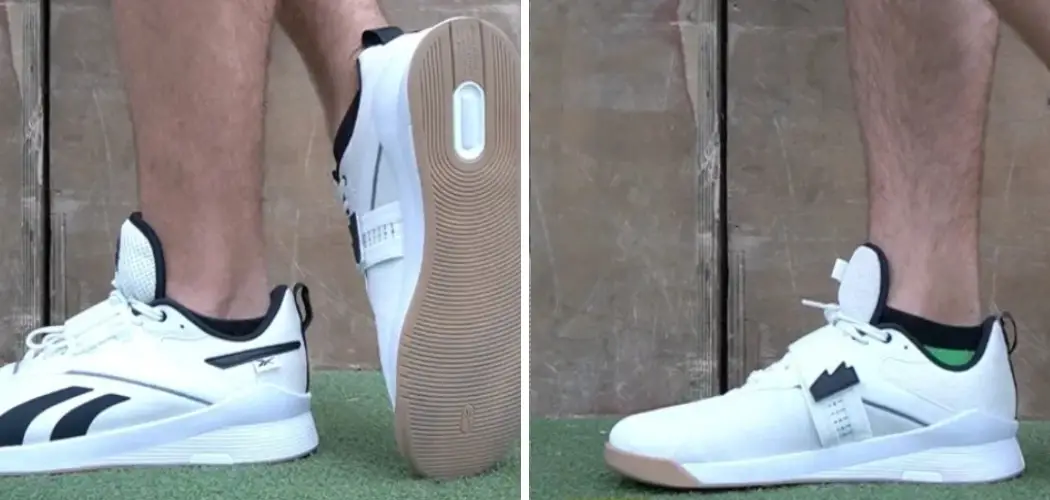Choosing the right weightlifting shoes is crucial for achieving optimal performance and ensuring safety during lifts. Properly fitting shoes provide the necessary stability, support, and traction, which can significantly impact your lifting technique and overall results. Whether you’re a beginner or an experienced lifter, understanding how weightlifting shoes should fit can help you make the best choice for your training needs.
In this guide on how should weightlifting shoes fit, we will explore the key aspects of fitting weightlifting shoes and what to look for when selecting the perfect pair.
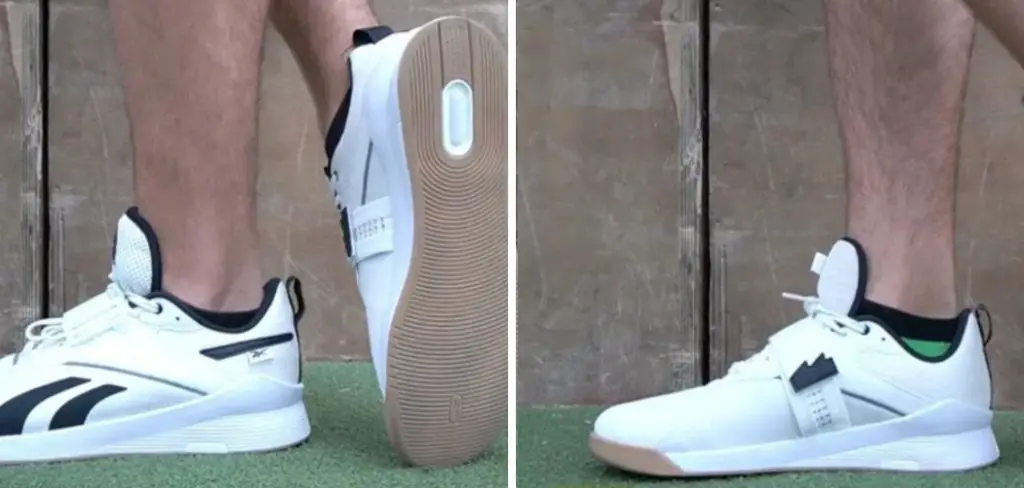
What is the Purpose of Weightlifting Shoes?
Before diving into fitting, it’s essential to understand the purpose of weightlifting shoes. Unlike regular athletic shoes, weightlifting shoes are specifically designed for lifting heavy weights and provide unique features to support this activity.
One of the main purposes of weightlifting shoes is to improve stability during lifts by reducing foot movement within the shoe. This can be achieved through a combination of elevated heels, stiff soles, and secure straps or laces.
Weightlifting shoes also offer more support compared to regular athletic shoes. The stiffer sole helps distribute the force evenly throughout the foot, reducing strain on specific areas such as the ankles and knees. Additionally, many weightlifting shoes have a wider toe box to provide ample space for the toes to spread and grip the ground better.
Needed Materials: What to Bring When Trying on Weightlifting Shoes
When trying on weightlifting shoes, it’s essential to bring the necessary materials to ensure a proper fit. These items include:
Socks:
Wear the same type of socks you would typically wear during weightlifting sessions. This will help provide a more accurate fit.
Lifting Gear:
If you have any specialized lifting gear such as knee sleeves or weightlifting belts, bring them along to try on with the shoes. These items can affect how the shoes feel and fit.
Insoles:
Some weightlifting shoes come with removable insoles that can be replaced with custom orthotics for added support. If you use orthotics, it’s important to bring them when trying on shoes to ensure they fit comfortably.
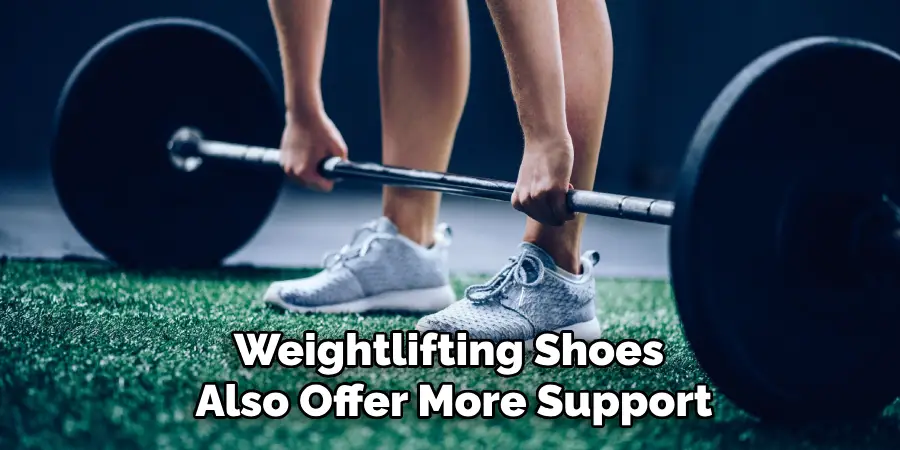
8 Step-by-step Guidelines on How Should Weightlifting Shoes Fit
Step 1: Measure Your Feet
Start by measuring your feet to determine the correct size of weightlifting shoes. It’s best to measure your feet at the end of the day when they are most swollen to ensure accuracy. Use a ruler or a tape measure to find the length from the heel to the tip of your longest toe. Additionally, measure the width of your foot at its widest part.
Compare these measurements to the sizing chart provided by the shoe manufacturer, as sizes may vary between brands. Properly measuring your feet helps ensure you select a pair that provides a snug and comfortable fit, which is crucial for maintaining stability and support during lifts.
Step 2: Try on the Shoes with Socks and Lifting Gear
Once you have determined the correct size from your measurements, it’s time to try on the weightlifting shoes. Make sure to wear the same type of socks you typically use during your weightlifting sessions, as this ensures an accurate fit. Additionally, put on any specialized lifting gear you normally wear, such as knee sleeves or a weightlifting belt. These items can affect how the shoes fit and feel during your lifts.
As you try on the shoes, pay close attention to how they fit around your entire foot. The shoes should feel snug but not overly tight. Your toes should have enough room to wiggle but should not slide forward during lifts. The heel should be securely locked in place without lifting out of the shoe. Walk around and perform a few basic movements, such as squats or lunges, to assess the comfort and support the shoes provide.
If you use custom orthotics, insert them and check if they fit properly without causing any discomfort. Ensuring a proper fit with your socks and lifting gear will help you achieve optimal performance and safety during your workouts.

Step 3: Check the Heel Height
The heel height of weightlifting shoes plays a crucial role in enhancing your lifting performance, particularly in exercises like squats, snatches, and clean and jerks. Most weightlifting shoes feature an elevated heel, typically ranging from 0.5 inches to 1 inch, which helps improve ankle mobility and allows for a deeper squat position. When trying on weightlifting shoes, it’s essential to ensure that the heel height feels comfortable and supportive.
Stand in the shoes and perform a few bodyweight squats. Pay attention to the position of your knees and hips; the heel should allow you to keep an upright torso and help drive through the heels during lifts. Ensure that the heel elevation feels stable and does not cause any discomfort or tipping forward. The right heel height can help maintain proper form, reduce the risk of injury, and enhance overall lifting efficiency.
If you’re unsure about the best heel height for your needs, consult with a coach or experienced lifter for recommendations based on your lifting style and mobility.
Step 4: Evaluate the Insole and Midsole
Weightlifting shoes have a stiff midsole to help distribute force evenly throughout the foot, reducing strain on specific areas like the ankles and knees. The insole also plays a crucial role in providing support and comfort during lifts.
When trying on weightlifting shoes, make sure the midsole feels rigid enough to support your lifting needs but not so stiff that it causes discomfort or restricts movement. Additionally, evaluate the insole for any cushioning or arch support it may provide. If you use custom orthotics, ensure they fit comfortably within the shoe without causing any pressure points.
Step 5: Assess Laces or Straps
Weightlifting shoes often come with secure straps or laces to help keep the foot in place during lifts. These features are crucial for maintaining stability and reducing foot movement within the shoe. When trying on weightlifting shoes, make sure the straps or laces feel secure but not too tight that they cause discomfort or cutting off circulation.
As you move and perform lifts, pay attention to how well the straps or laces keep your foot in place. If they seem overly loose or do not provide enough support, it may be a sign that the shoe is not the right fit for your needs.
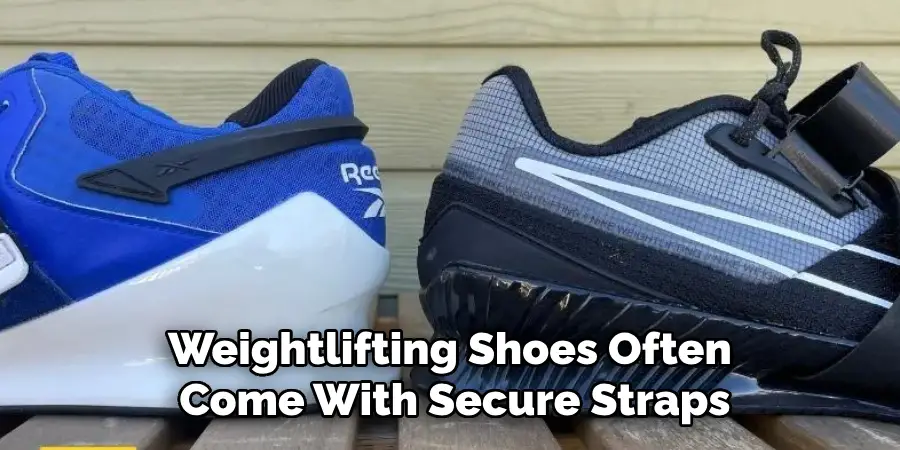
Step 6: Consider Ankle Support
Ankle support is a crucial factor when selecting weightlifting shoes since it helps prevent rolling or twisting during lifts, which can lead to injuries. Weightlifting shoes typically provide more ankle support compared to regular athletic shoes, thanks to their higher cut and additional padding around the ankle area. When trying on weightlifting shoes, ensure that the upper part of the shoe wraps securely around your ankle, offering a snug but comfortable fit. Also, check for any potential areas that may cause friction or discomfort during lifts.
Step 7: Check the Toe Box
The toe box of weightlifting shoes should provide enough space for your toes to move comfortably while still keeping them secure. When trying on weightlifting shoes, make sure your toes have enough room to wiggle, but do not slide forward during lifts. Additionally, ensure that the material used in the toe box is sturdy and durable enough to withstand repeated use and pressure from lifts without causing any discomfort or pain.
It’s also essential to consider the shape of your feet when evaluating the toe box. Some weightlifting shoes may be more suitable for individuals with wider or narrower feet, so make sure to try on a few different styles and brands to find the best fit for your foot shape.
Step 8: Final Thoughts
Selecting the right weightlifting shoes can make a significant difference in your lifting performance and overall safety. Take the time to properly measure your feet, try on various sizes and styles while wearing socks and lifting gear, and pay attention to crucial factors like heel height, midsole stiffness, ankle support, and toe box comfort. It’s worth investing in a quality pair of weightlifting shoes that provide the necessary support, stability, and comfort for your specific lifting needs.
With the right fit and features, weightlifting shoes can help you achieve your fitness goals while reducing the risk of injury.
Following these steps on how should weightlifting shoes fit and considering additional factors such as brand reputation, price point, and personal preferences can help you find the perfect weightlifting shoes for your training needs. Remember to regularly check and replace your weightlifting shoes as needed to maintain proper support and prevent any potential injuries. Happy lifting!
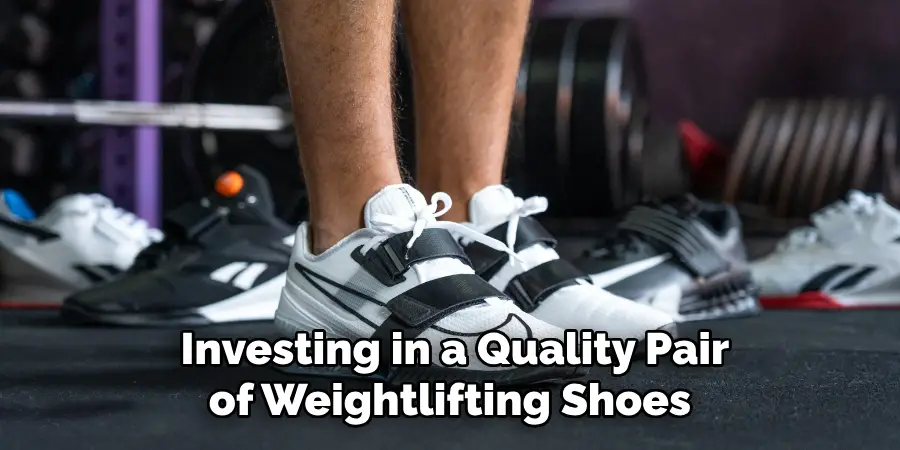
Conclusion
Selecting the right weightlifting shoes is an essential step in ensuring optimal performance, safety, and comfort during your weightlifting sessions. By following these steps on how weightlifting shoes should fit and thoroughly evaluating the fit, heel height, support features, and ankle support of each shoe you try on, you can make an informed decision that best suits your needs.
Remember to also consider factors such as durability, brand reputation, and overall reviews when making your selection. With the right weightlifting shoes, you can confidently tackle any lift and reach new levels of strength and fitness. Keep lifting strong!

